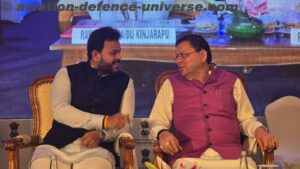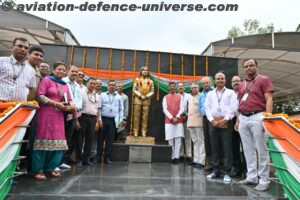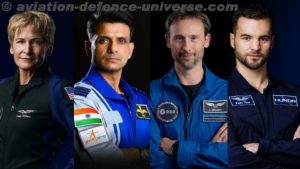- Celebrates its 72nd Corps Day today
 By Col (Retd) Y L Saha
By Col (Retd) Y L SahaNew Delhi. 15th October. Design, development, Trials, inspection – quality assurance, refit, recovery and overhauls of weapon systems and equipment, the Corps of Electronics & Mechanical Engineers (EME) of the Indian army has done it all in addition to providing technical advice to the Army on systems & induction of equipment both in Peace and War.
The Corps has always lived up to its motto; omnia facimus- “we can do everything”. The corps has kept itself abreast of the fast change and has provided a very high degree of equipment availability to the users both in war & peace. Now the entire corps is engaged in planning & execution of engineering support activities including all kind of recovery to the entire equipment life cycle i.e. from concept to discard stage.
The equipment profile of the Army, in terms of both the population & the technological sophistication, has under  gone a sea change in almost a geometric progression. From 75 mm to 155mm guns, valve based communication equipment, the modern state of art computerised digital communication systems, from T-16 carriers to most modern T- 72 & MBT Arjun and increasing helicopters of the army aviation corps, the engineering support problems & the repair techniques have also under gone a considerable change.
gone a sea change in almost a geometric progression. From 75 mm to 155mm guns, valve based communication equipment, the modern state of art computerised digital communication systems, from T-16 carriers to most modern T- 72 & MBT Arjun and increasing helicopters of the army aviation corps, the engineering support problems & the repair techniques have also under gone a considerable change.
The large scale introduction of armour in World War 1 & 2 saw the reorganisation of British army technical resources into a new corps of Royal Electrical and Mechanical Engineers in May 1942 and soon in India also on 1 May 1943 a Corps of Indian Electrical and Mechanical Engineers (IEME) was raised.
 The first acid test for this young Corps was the re-conquest of Burma. Repair and recovery in this terrain required superhuman effort and ingenuity and both were amply displayed during the operations. The end of the war, and the Partition in 1947 witnessed depletion in the Corps of IEME.
The first acid test for this young Corps was the re-conquest of Burma. Repair and recovery in this terrain required superhuman effort and ingenuity and both were amply displayed during the operations. The end of the war, and the Partition in 1947 witnessed depletion in the Corps of IEME.The young corps accredited itself well during 1948 J&K operation and this is amply borne out by the message received from Lt. Gen KM Carriappa, the then GOC-in-C Western Command and later Field Marshal, “I write this to tell you how very satisfied I am with the efficient way in which the officers and men of your Corps are carrying out their tasks Under most trying conditions. The morale of every one of them is indeed very high and their keenness, determination and desire to go ahead with the work in hand have indeed been a tonic to me.”
India became a Republic on 26 January 1950 and with this the Corps shed its ‘I’ and became the Corps of EME. The debacle of 1962 saw wide expansions with induction of modern equipment and the Corps was also reorganised. During the 1965 operations, the Corps acquitted themselves honourably, and 26 all ranks of the Corps made the supreme sacrifice.
December 1971 saw once again Pakistan Air Force launching a pre-emptive strike on India. The Indian Army retaliated by launching three Corps and a division in a swift move in the east. The tale of this operation is well documented and shall not be repeated here, but what is emphasised is the ingenuity, courage and technical competence of the craftsmen which allowed formations to successfully carry out the operational plans. The riverine terrain coupled with the speed of operations, placed a great strain on the equipment, but the men proved up to it and the EME craftsmen were everywhere and very often they were sharing honours with the forward-most troops.
retaliated by launching three Corps and a division in a swift move in the east. The tale of this operation is well documented and shall not be repeated here, but what is emphasised is the ingenuity, courage and technical competence of the craftsmen which allowed formations to successfully carry out the operational plans. The riverine terrain coupled with the speed of operations, placed a great strain on the equipment, but the men proved up to it and the EME craftsmen were everywhere and very often they were sharing honours with the forward-most troops.
In 1987 Indian Peace Keeping Force (IPKF) was inducted into Sri Lanka and initially 654 EME Battalion was moved to sup-port 54 Infantry Division and was later followed by 636, 604, 657 EME Battalions and two workshops of 623 EME Battalion.
 On the Siachen glacier, EME craftsmen have had to face innumerable technological problems, working with 50% efficiency at altitudes above 4000 meters. Inspite of these, guns and missiles have been stripped, inspected and repaired and modifications and trials have been carried out. Hav P Krishan and Sep Bhola Prasad, to name a few, have been commended by the Northern Army Commander for recovering vehicles at heights up to 5600 metres.
On the Siachen glacier, EME craftsmen have had to face innumerable technological problems, working with 50% efficiency at altitudes above 4000 meters. Inspite of these, guns and missiles have been stripped, inspected and repaired and modifications and trials have been carried out. Hav P Krishan and Sep Bhola Prasad, to name a few, have been commended by the Northern Army Commander for recovering vehicles at heights up to 5600 metres. The Corps, born in the middle of World War II, had grown from infancy to maturity, and its resilience was proved by its achievements under severe conditions and chronic shortages. The Corps has squarely faced the challenge of skies. Initially handpicked officers, JCOs & ORs had been put through a rigorous training of aeronautical engineering specific to the maintenance & repairs of helicopters with the Air Force almost 32 years back in various phases to support the flying of helicopters totally by the Army.
With formation of Army Aviation Corps 28 years back & the transfer of Cheetah & Chetak helicopters from Air Force to Army, the responsibility of keeping them flying with ‘zero error & no accident’ fell completely on to the officers/ JCOs/ORs of the Corps of EME to ensure the battle worthiness by rendering excellent service in terms of maintenance, repairs & limited overhauls.
The challenge was great for the EME to support aviation training of these 75 officers & 1800 men (JCOs /Men) and  for the ongoing fresh induction and to ensure the flying of these vintage helicopters (45 yrs old). Ultimately a complete department of Faculty of Aeronautical Engineering (FAE) was established in the year 1994 in the Military College of EME, Secundrabad to provide complete training to its officers & men. Today the college is providing Advance Course at par with M.Tech (by JNU), B.Tech and Diploma in aeronautical engineering apart from the in numerable short term & long term courses to these men to keep them abreast with the latest technology.
for the ongoing fresh induction and to ensure the flying of these vintage helicopters (45 yrs old). Ultimately a complete department of Faculty of Aeronautical Engineering (FAE) was established in the year 1994 in the Military College of EME, Secundrabad to provide complete training to its officers & men. Today the college is providing Advance Course at par with M.Tech (by JNU), B.Tech and Diploma in aeronautical engineering apart from the in numerable short term & long term courses to these men to keep them abreast with the latest technology.
 Today is the biggest challenge for all the armies of the world to see how fast the equipment & weapons are recycled into the thick of battle field by repairs & recovery with speed as no army can afford to have 100 % war reserves and cannot fetch them to all kinds of terrain when required. The Corps needs to make a concerted effort in the pursuit of excellence by keeping them ready to effectively face & handle the impact of RMA (Revolution in Military Affairs) on future Land Combat (C4I2S2) which would include Deep strikes focussed on Economic objectives or generation of State of Terror in the event of limited Low Intensity Warfare.
Today is the biggest challenge for all the armies of the world to see how fast the equipment & weapons are recycled into the thick of battle field by repairs & recovery with speed as no army can afford to have 100 % war reserves and cannot fetch them to all kinds of terrain when required. The Corps needs to make a concerted effort in the pursuit of excellence by keeping them ready to effectively face & handle the impact of RMA (Revolution in Military Affairs) on future Land Combat (C4I2S2) which would include Deep strikes focussed on Economic objectives or generation of State of Terror in the event of limited Low Intensity Warfare. The Corps of EME had excellently shouldered & executed the responsibility in the past in true sense and will always carry out them to the entire satisfaction of the Nation to keep the motto high-“work is worship” / “we can do everything” (Omnia Facimus).
The author was Founder Director EME-Aviation.
 gone a sea change in almost a geometric progression. From 75 mm to 155mm guns, valve based communication equipment, the modern state of art computerised digital communication systems, from T-16 carriers to most modern T- 72 & MBT Arjun and increasing helicopters of the army aviation corps, the engineering support problems & the repair techniques have also under gone a considerable change.
gone a sea change in almost a geometric progression. From 75 mm to 155mm guns, valve based communication equipment, the modern state of art computerised digital communication systems, from T-16 carriers to most modern T- 72 & MBT Arjun and increasing helicopters of the army aviation corps, the engineering support problems & the repair techniques have also under gone a considerable change. The first acid test for this young Corps was the re-conquest of Burma. Repair and recovery in this terrain required superhuman effort and ingenuity and both were amply displayed during the operations. The end of the war, and the Partition in 1947 witnessed depletion in the Corps of IEME.
The first acid test for this young Corps was the re-conquest of Burma. Repair and recovery in this terrain required superhuman effort and ingenuity and both were amply displayed during the operations. The end of the war, and the Partition in 1947 witnessed depletion in the Corps of IEME. retaliated by launching three Corps and a division in a swift move in the east. The tale of this operation is well documented and shall not be repeated here, but what is emphasised is the ingenuity, courage and technical competence of the craftsmen which allowed formations to successfully carry out the operational plans. The riverine terrain coupled with the speed of operations, placed a great strain on the equipment, but the men proved up to it and the EME craftsmen were everywhere and very often they were sharing honours with the forward-most troops.
retaliated by launching three Corps and a division in a swift move in the east. The tale of this operation is well documented and shall not be repeated here, but what is emphasised is the ingenuity, courage and technical competence of the craftsmen which allowed formations to successfully carry out the operational plans. The riverine terrain coupled with the speed of operations, placed a great strain on the equipment, but the men proved up to it and the EME craftsmen were everywhere and very often they were sharing honours with the forward-most troops. On the Siachen glacier, EME craftsmen have had to face innumerable technological problems, working with 50% efficiency at altitudes above 4000 meters. Inspite of these, guns and missiles have been stripped, inspected and repaired and modifications and trials have been carried out. Hav P Krishan and Sep Bhola Prasad, to name a few, have been commended by the Northern Army Commander for recovering vehicles at heights up to 5600 metres.
On the Siachen glacier, EME craftsmen have had to face innumerable technological problems, working with 50% efficiency at altitudes above 4000 meters. Inspite of these, guns and missiles have been stripped, inspected and repaired and modifications and trials have been carried out. Hav P Krishan and Sep Bhola Prasad, to name a few, have been commended by the Northern Army Commander for recovering vehicles at heights up to 5600 metres.  for the ongoing fresh induction and to ensure the flying of these vintage helicopters (45 yrs old). Ultimately a complete department of Faculty of Aeronautical Engineering (FAE) was established in the year 1994 in the Military College of EME, Secundrabad to provide complete training to its officers & men. Today the college is providing Advance Course at par with M.Tech (by JNU), B.Tech and Diploma in aeronautical engineering apart from the in numerable short term & long term courses to these men to keep them abreast with the latest technology.
for the ongoing fresh induction and to ensure the flying of these vintage helicopters (45 yrs old). Ultimately a complete department of Faculty of Aeronautical Engineering (FAE) was established in the year 1994 in the Military College of EME, Secundrabad to provide complete training to its officers & men. Today the college is providing Advance Course at par with M.Tech (by JNU), B.Tech and Diploma in aeronautical engineering apart from the in numerable short term & long term courses to these men to keep them abreast with the latest technology.  Today is the biggest challenge for all the armies of the world to see how fast the equipment & weapons are recycled into the thick of battle field by repairs & recovery with speed as no army can afford to have 100 % war reserves and cannot fetch them to all kinds of terrain when required. The Corps needs to make a concerted effort in the pursuit of excellence by keeping them ready to effectively face & handle the impact of RMA (Revolution in Military Affairs) on future Land Combat (C4I2S2) which would include Deep strikes focussed on Economic objectives or generation of State of Terror in the event of limited Low Intensity Warfare.
Today is the biggest challenge for all the armies of the world to see how fast the equipment & weapons are recycled into the thick of battle field by repairs & recovery with speed as no army can afford to have 100 % war reserves and cannot fetch them to all kinds of terrain when required. The Corps needs to make a concerted effort in the pursuit of excellence by keeping them ready to effectively face & handle the impact of RMA (Revolution in Military Affairs) on future Land Combat (C4I2S2) which would include Deep strikes focussed on Economic objectives or generation of State of Terror in the event of limited Low Intensity Warfare. 


























































































































